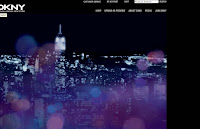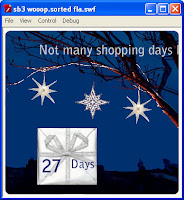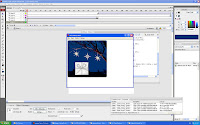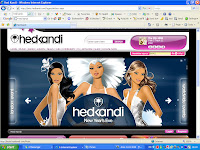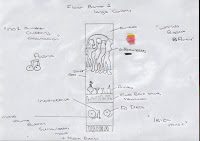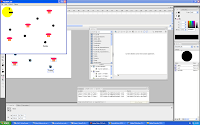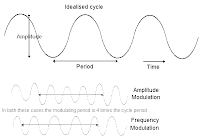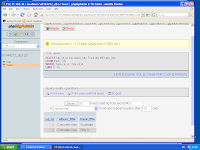IRQ
IRQ stands for Interpret request. It is a device that works within the processor within the computer using input terminals. It is the hardware signal that instigates an interrupt that has an occurred. Within the modern computers today they use plug and play on them where as they used to have to set IRQ on them individually. Also within your computer each device including network interface card, keyboard, and mouse, is assigned an Interrupt Request (IRQ) this is a line that the device uses to alert the microprocessor that data needs to be processed. Each of these devices that are connected to the computer need there own unique IRQ if not the there will be conflicts between the IRQ. IRQ’s are not normally assigned to an NIC but if on the computer you are using an old version of windows, it is best to assign one as this will prevent running into an IRQ conflict.
DMA
DMA stands for Direct Access Memory this is a method of transferring data between two different memory locations within the computer. DMA is used to send the data at high speeds and large amounts of data at once. This is normally used for video displays that contain a lot of moving and changing images and these have to be changed at different frequency times.
In order for a NIC to operate efficiently, it needs to be able to carry out its interface tasks with minimum disruption to the CPU of the computer.
Four methods of NIC to computer data transfer are used
Bus mastering DMA (direct memory access):
•Data enters the NIC from the network.
•The NIC's own CPU stores data in the NIC's RAM.
•NIC's CPU sends data to computer's motherboard when the network transmission is complete.
•The computer's CPU is not interrupted - the NIC's CPU has ultimate responsibility for data transfer.
DMA:
•Data enters the NIC from the network.
•The NIC's CPU interrupts the computer's CPU.
•The computer's CPU stops other tasks and transfers the network data into its RAM.
I/O
I/O stands for Input / Output this is used to describe the entire connection path between the CPU Bus and the disk drive. It also is used to describe the "read" and "write" information sent back and forth between the CPU and the disk drive. This means it describes the method in which the information that is read off and writing on the CD is send back and forth between the disk drive and the CPU
There are four techniques used for transfer of data, the NIC may use one or more of these techniques.
•Polling is where the microprocessor checks the status of the peripheral under program control.
•Programmed I/O is where the microprocessor alerts the designated peripheral by applying its address to the system's address bus.
•Interrupt-driven I/O is where the peripheral alerts the microprocessor that its ready to transfer data.
•DMA is where the intelligent peripheral assumes control of the system bus to access memory directly. This removes load from the CPU but requires a separate processor on the card.
RAM
RAM stands for random access memory. RAM stored data as electrical signals. if the power from the computer is cut off then all unsaved data will be lost. When saving data it can never be stored permanently onto the RAM so therefore this type of memory is known as volatile memory
There are two basic types of RAM:
-dynamic RAM (DRAM)
-static RAM (SRAM)
Memory address register
This is a number that is given to each byte within the memory within the computer that is used within the CPU to track where data and instructions are stored are stored on the ram. Each byte is given a memory address and whether or not it is being used to store data. The computer’s CPU uses the address bus to communicate which memory address it wants to access, and the memory controller reads the address and then puts the data stored in that memory address back onto the address bus for the CPU to use.
Setting protocols
A protocol is a set of rules and instructions which are used to tell the computer what to do and how to communicate with other hardware in the computer. Therefore when there are one or move computers within a system they will exchange many messages to tell each other what they are doing what they are to do. It is a format for which computers understand and know what to do for when they receive and send data. Therefore when there is more than one computer communicating, they will exchange messages There is more than one type of protocol; the most common ones are HTTP and FTP. HTTP is also known as hyper text transfer protocol, this is a server protocol, and this is used for people who wise to gain access to the internet. FTP is also known as File Transfer Protocol, this is when files are sent over a network. There are three protocols that are known as flow control, error control and data compression.
Data bus
A data bus is a physical connection that is used to carry information between the CPU to the other devices within the computer. This bus also carries data that is being processed or used within the system. There is also another bus called the control bus that sends signals that report all of devices within the system.
For example, one line of the bus is used to indicate whether the CPU is currently reading from or writing to main memory.
This uses a collection of wires connecting the CPU with the main memory that that is used to identify certain addresses in the memory.
All buses consist of two parts - an address bus and a data bus. The data bus transfers actual data whereas the address bus transfers information about where the data should go.
OSI Seven Laver Model
1.Application layer
2.Presentation layer
3.Session layer
4.Transport layer
5.Network layer
6.Data link layer
7.Physical Layer
These days when a computer is bought, it is ready made to be able to use on networks. The whole point of standardisation is to make sure they have more open systems, which means users will be able to select from a wider range of manufacturer’s products. The OSI seven layer models for communication protocol identify a hierarchy of seven layers.
1.Application layer
This is the transfer of information between both of the users, applications programs and devices (e.g. writing a letter or sending an email). The applications layer hides the physical network from the user, File transfer, access and management. A gateway can provide a connection between any networks at this level. Think of user view of system. The application layer contains a variety of protocols that are commonly needed. For example, there are hundreds of incompatible terminal types in the world.
2.Presentation layer
Describes the syntax of data being transferred so that different devices, which may be using data in different formats, can communicate with one another. It may also carry out encryption to ensure data security during transmission over vulnerable telecommunication links, The presentation layer also attempts to deal with conversions between terminals that use different line and screen lengths and different character sets, Think of character format.
3.Session layer
Describes the organisation of data sequences larger than the packages handled by lower layers, When a user requests a particular service from the network, the session layer handles the dialogue including the use of passwords and user-ids, It also manages data exchange (i.e., duplex or half duplex), Think of an Internet dialup session.
4.Transport layer
Describes the quality and nature of the data delivery, The transport layer masks out any peculiarities of the network and any undesirable features that may prevent a high quality transmission for the network, It provides the session layer with a reliable message transfer facility that is independent of the underlying network type. Messages are divided into message blocks with error detection and security procedures. Think for routing.
5.Network link layer
Describes the routing of packages of information around the network over various data links and between any two notes in a network (or between networks), Larger message blocks can be subdivided into packages; A router can connect dissimilar networks at this level. Routing software can also carry out accounting functions to enable the network owner to charge users. This is the layer in which the NIC operates under. Think of network packets.
6.Data link layer
Describes the logical organisation of the data bits transmitted on a particular medium. The data link layer handles error detection, error correction, retransmission and synchronisation (which improve the quality of the network), Data is transmitted in frames, and each frame containing one packet, a bridge can connect two similar networks at this level. Think of data transmission.
7.Physical layer
Describes the physical properties of the various communications media (which includes the mechanical properties, electrical properties and the transmission of binary data within the communication channel). Standards are set regarding the mechanical, electrical and procedural aspects of interface devices, For example, standards are set for the number of pins a network connector should have and the function and position of each pin, at this level data is sent as a serial stream of bits - there is no error correction. Think of wiring
Each of the NIC drivers has a relationship to the OSI layer
